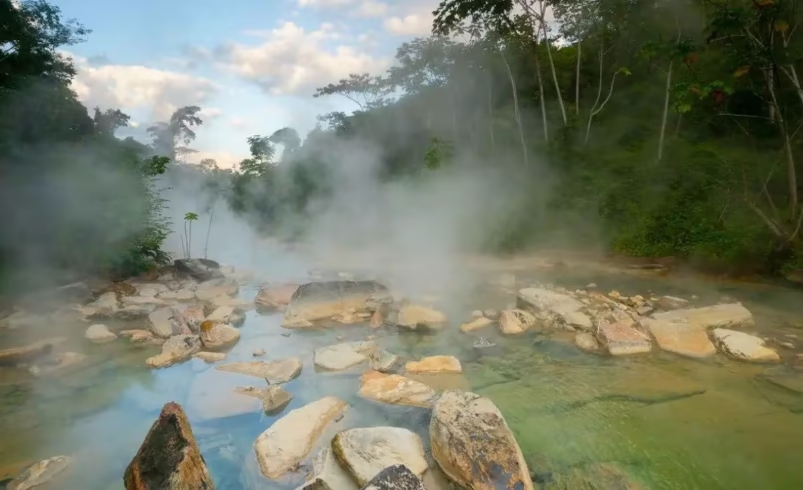Peru’s Boiling River: A Natural Phenomenon Defying Scientific Explanation
- August 4, 2025
- 0

The Boiling River, located deep within the Peruvian Amazon, is a remarkable natural phenomenon that has captured global attention. Known for its extreme temperatures, this river reaches levels that can cause severe burns or even death. Despite its remote location, far from any volcanic activity, the river’s intense heat remains a mystery to scientists and locals alike.
For the indigenous communities living near the Boiling River, it is an integral part of daily life. The locals utilize its hot waters for cooking, cleaning, and other essential activities. Beyond its practical uses, the river holds cultural and spiritual significance for these communities, who have passed down stories and knowledge about it through generations.
The enigmatic nature of the Boiling River has drawn the interest of scientists worldwide. Andres Ruzo, a geoscientist, has dedicated significant efforts to uncovering the origins of this natural wonder. His research aims to understand how such high temperatures can exist in a non-volcanic region. Ruzo’s work not only seeks to solve this scientific puzzle but also highlights the importance of preserving this unique ecosystem.
In response to growing interest and potential threats from tourism and environmental changes, The Boiling River Project was established. This initiative focuses on research and conservation efforts to protect the river and its surrounding environment. A key component of the project is preserving indigenous knowledge and ensuring that local communities benefit from any developments.
The Boiling River presents a unique challenge to scientific understanding and offers valuable insights into geothermal activity in unexpected locations. Its preservation is crucial not only for maintaining biodiversity but also for respecting the cultural heritage of indigenous peoples. As research continues, the Boiling River stands as a testament to nature’s mysteries and the need for sustainable conservation practices.